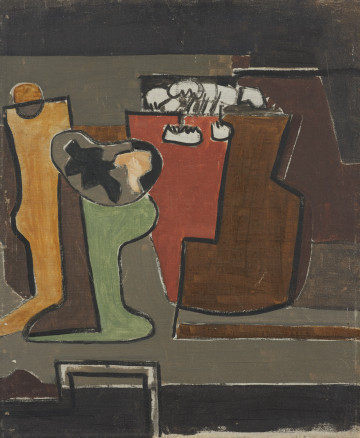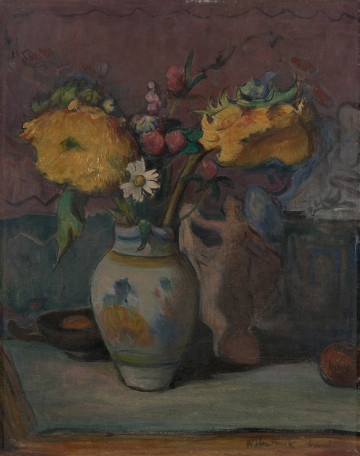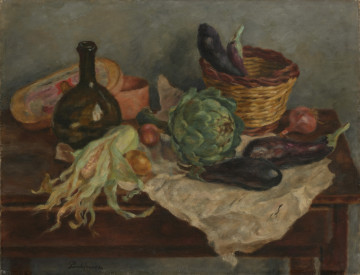
Still life
1936
National Museum in Szczecin
Part of the collection: European classics of modernity
Between 1918 and 1924, Józef Jarema studied at Kraków's Academy of Fine Arts under Stanisław Dębicki, Jacek Malczewski, Ignacy Pieńkowski, Władysław Jarocki and Józef Pankiewicz. He was associated with the Kapists. Initially, he organised fundraising for students to go to Paris, and then he went there himself in 1924. He returned to Poland in 1931. A year later, he became an animator at the Cricot Theatre, with which his younger sister, the painter Maria Jarema, was also associated. During the war, he took part in the battle of Monet Cassino. Józef Czapski helped Jarema to join the art department, which functioned within the army. He co-organised the first exhibition of soldier painters in Baghdad, later in Tel-Aviv and Rome. After the war, he settled in Italy. In 1945, together with the former futurist Enrico Prampolini, he founded the international Art Club in Rome, which united representatives of various avant-garde trends. In 1950 he settled in Nice. The painting in the collection of the National Museum in Szczecin dates from 1923 before the artist left for Paris. It is a still life with a fruit basket painted realistically. The composition has been rendered against a neutral brown and grey background. The painting shows the beginnings of interest in colour as the dominant feature of the work. At that time, Jarema concentrated on the effects of harmony possible to be achieved from colour combinations. He emphasised the quality of the painting matter. His struggle with the plane of the canvas was also important for him.
Beata Małgorzata Wolska
Author / creator
Dimensions
cały obiekt: height: 39 cm, width: 55 cm
Object type
painting
Creation time / dating
Creation / finding place
Identification number
Location / status

1936
National Museum in Szczecin

około 1907
National Museum in Szczecin

około 1924
National Museum in Szczecin
DISCOVER this TOPIC
National Museum in Szczecin
DISCOVER this PATH
Educational path